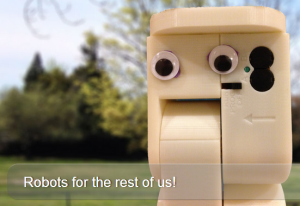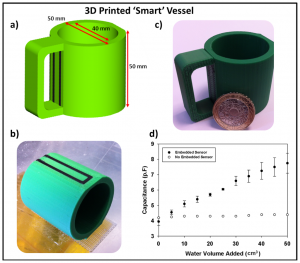There is a great research paper from University of Warwick that showcases what may just be the next big leap forward for 3D Printing, a new material called Carbomorph. The breakthrough comes from a formulated material that exhibits piezoresistive behavior. To the layman that means it is able to do become a sensor of all types of cool things. Touch sensors, simple motion sensors, volume sensors and more can all be created through unique applications of this type of material. Most notably the material is able to be used in existing 3D Printers.
 |
| Mo-Bot: An educational robot kit that could be enhanced by printed electronic sensors |
The printed sensors are simple to interface to and require no complicated electronic circuits or amplification, in-fact the sensors can be monitored using existing open-source electronics and freely available programming libraries. Standard print settings were used and no modifications to the printer were required. A significant advantage in using 3D printing to create electronic components such as these is that sockets for connecting to standard equipment such as interface boards and multimeters can be printed as part of the printed structure whereas a 2D printed electronics approach using a technology such as inkjet printing would require the use of conductive glues and paints. This approach will open up many new applications for 3DP where fully interactive devices can be printed, for instance, designers could understand how people tactilely interact with their products by monitoring sensors embedded inside.

